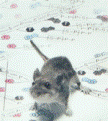Papers in the Biological Sciences

Jay F. Storz Publications
Document Type
Article
Date of this Version
12-2014
Citation
Published in Science 346:6215 (2014), pp. 1311-1320; doi: 10.1126/science.1251385
Abstract
Birds are the most species-rich class of tetrapod vertebrates and have wide relevance across many research fields. We explored bird macroevolution using full genomes from 48 avian species representing all major extant clades. The avian genome is principally characterized by its constrained size, which predominantly arose because of lineage-specific erosion of repetitive elements, large segmental deletions, and gene loss. Avian genomes furthermore show a remarkably high degree of evolutionary stasis at the levels of nucleotide sequence, gene synteny, and chromosomal structure. Despite this pattern of conservation, we detected many non-neutral evolutionary changes in protein-coding genes and noncoding regions. These analyses reveal that pan-avian genomic diversity covaries with adaptations to different lifestyles and convergent evolution of traits.
All figures, references, and tables except Suppl Tables S9, S10, S11, S28, S29, S30, S31, & S34
Storz SCIENCE 2014 Comparative genomics-Table_S9.txt (8 kB)
Table S9
Storz SCIENCE 2014 Comparative genomics-Table_S10.txt (393 kB)
Table S10
Storz SCIENCE 2014 Comparative genomics-Table_S11.txt (77 kB)
Table S11
Storz SCIENCE 2014 Comparative genomics-Table_S28.txt (13 kB)
Table S28
Storz SCIENCE 2014 Comparative genomics-Table_S29.txt (3 kB)
Table S29
Storz SCIENCE 2014 Comparative genomics-Table_S30.txt (3 kB)
Table S30
Storz SCIENCE 2014 Comparative genomics-Table_S31.txt (2 kB)
Table S31
Storz SCIENCE 2014 Comparative genomics-Table_S34.txt (39 kB)
Table S34
Included in
Genomics Commons, Ornithology Commons, Other Ecology and Evolutionary Biology Commons, Poultry or Avian Science Commons, Zoology Commons


Comments
Copyright (c) 2014 AAAS. Used by permission.